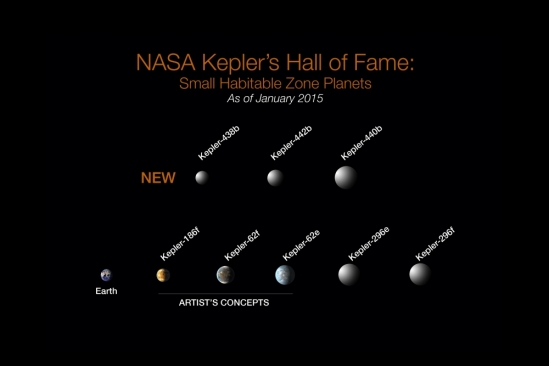
Planet Earth is situated in what astronomers call the Goldilocks Zone — a sweet spot in a solar system where a planet’s surface temperature is neither too hot nor too cold. An ideal distance from a home star — in Earth’s case, the sun – this habitable zone, as it is also known, creates optimal conditions that prevent water from freezing and generating a global icehouse or evaporating into space and creating a runaway greenhouse.
However, a new theory by UC Santa Barbara geochemist Matthew Jackson posits that the bulk composition of a planet may also play a critical role in determining the planet’s tectonic and climatic regimes and therefore its habitability. In a paper published today in Nature Geoscience, Jackson, an associate professor in UCSB’s Department of Earth Science, and Mark Jellinek of the University of British Columbia discuss their research.
According to Jackson, plate tectonics is a manifestation of the Earth trying to cool itself. Cold plates sink into the Earth and absorb heat, while volcanoes release heat where plates are spreading apart and forming. “Whether or not plate tectonics can happen actually depends on whether or not the Earth is too hot or too cold,” he said. “If it’s too hot, plate tectonics seizes up and if it’s too cold, it freezes up.”
Until a decade ago, Jackson noted, scientists based the Earth’s composition on a model tied to ancient stony meteorites called chondrites, which were considered the building blocks of the planet. Then studies analyzing the ratio of two neodymium isotopes — 142Nd and 144Nd — demonstrated that Earth’s composition may differ from that of chondrites — and differ enough to send scientists back to the drawing board.
In 2013, Jackson and Jellinek published a new compositional model of the Earth in which a large portion of the mantle was depleted to form the continental crust. The model also assumed a 30 percent reduction in the uranium, thorium and potassium content in the planet. The decay of these naturally occurring elements generates almost all of the planet’s radioactive heat.
The new paper takes this revised model further by examining Earth’s geodynamics. “We argue that if the planet had as much uranium, thorium and potassium as the old model, plate tectonics might not be possible,” explained Jackson. “If this is the case, you can end up with a planet that has only one big plate and can become an extreme greenhouse like Venus. The new compositional model gives Earth a sweet spot of its own where its interior is neither too hot nor too cold — a place that allows our current mode of plate tectonics to operate.”
Jackson added that the thermal and tectonic histories of the Earth are intimately intertwined, and this latest paper explores what happens if heat production is turned down by a third, as the new compositional model suggests.
If uranium, thorium and potassium govern whether or not plate tectonics can occur, as Jackson and Jellinek propose, astronomers looking for habitable planets might have another parameter to consider. Since NASA’s Kepler Space Telescope has already found more than 1,000 planets — a small fraction of which reside in the habitable zone around their respective stars — it is important to understand how additional variables, including a planet’s composition, can narrow the field of potentially habitable extrasolar worlds.
“Our hypothesis suggests that among the rocky exoplanets, there’s another dial that’s important to turn when considering whether a planet is habitable or not: its bulk composition,” Jackson said. “Bulk composition determines its uranium, thorium and potassium abundance, which governs its internal radiogenic heating and ultimately dictates whether or not plate tectonics can happen — as well as the amount of volcanism and the release of CO2 from a planet that can occur. These are the variables that determine whether a planet can support a habitable climate.”
Note: The above post is reprinted from materials provided by University of California – Santa Barbara.










